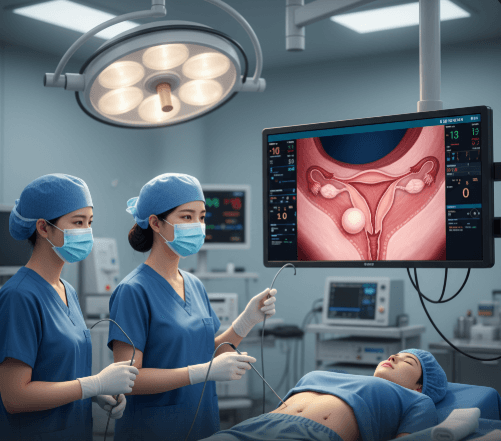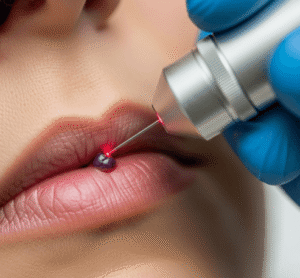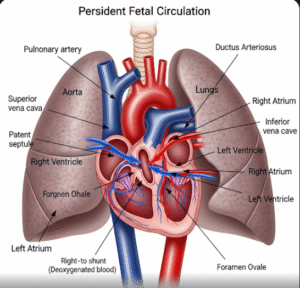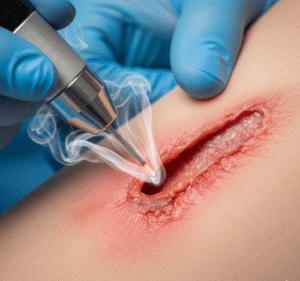What it is
A myomectomy is a surgical procedure to remove uterine fibroids (also called myomas or leiomyomas) while preserving the uterus. Fibroids are noncancerous growths that develop in or on the uterus, and although many women live without symptoms, some experience heavy menstrual bleeding, pelvic pain, infertility, or pregnancy complications.
Unlike hysterectomy (removal of the uterus), myomectomy is uterus-sparing, making it the treatment of choice for women who wish to maintain fertility or keep their uterus.
➡️ Key facts about myomectomy:
- Removes fibroids but preserves the uterus
- Can be performed through different approaches (open surgery, laparoscopy, hysteroscopy, robotic-assisted surgery)
- Widely available in Korea with advanced techniques and minimal recovery time
Why it’s done
Myomectomy is recommended when fibroids cause symptoms or affect reproductive health.
✔️ Medical reasons for myomectomy:
- Heavy or prolonged menstrual bleeding leading to anemia
- Pelvic pressure or pain caused by large fibroids
- Frequent urination or constipation due to fibroid pressure on nearby organs
- Infertility or recurrent miscarriage linked to fibroid location and size
- Rapid growth of fibroids raising concerns about complications
✔️ Benefits of myomectomy:
- Relief from symptoms without removing the uterus
- Improved fertility outcomes for women trying to conceive
- Preservation of hormonal and reproductive functions
- Better quality of life compared to living with large or symptomatic fibroids
Alternatives
Not all fibroids require surgical removal. Alternatives may be considered depending on symptoms, size, and location of fibroids.
🔹 Medical management:
- Medications like hormonal contraceptives or gonadotropin-releasing hormone (GnRH) agonists to shrink fibroids or control bleeding
- Tranexamic acid or nonsteroidal anti-inflammatory drugs (NSAIDs) for symptom relief
🔹 Minimally invasive procedures:
- Uterine artery embolization (UAE): Cuts off blood supply to fibroids, causing them to shrink
- MRI-guided focused ultrasound: Uses high-intensity ultrasound waves to destroy fibroid tissue
🔹 Hysterectomy:
- Complete removal of the uterus, an option for women who do not wish to preserve fertility
🔹 Watchful waiting:
- Small, asymptomatic fibroids may only require regular monitoring with ultrasound
Preparation
Proper preparation ensures a safe and successful procedure.
➡️ Medical preparation:
- Complete pelvic ultrasound or MRI to map fibroid size, number, and location
- Blood tests to check for anemia and general health status
- Preoperative medications (like GnRH agonists) to shrink fibroids and reduce blood loss during surgery
➡️ Personal preparation:
- Discussing fertility goals with the doctor
- Preparing for possible hospital stay depending on the surgical method
- Arranging family or caregiver support during recovery
➡️ Mental preparation:
- Understanding different surgical approaches and possible complications
- Attending counseling sessions if feeling anxious about surgery
- Preparing emotionally for recovery time and lifestyle adjustments
How it’s done
In Korea, myomectomy is performed using advanced techniques that minimize scarring, pain, and downtime.
✔️ Types of myomectomy procedures:
➡️ Hysteroscopic myomectomy
- Best for fibroids located inside the uterine cavity (submucosal fibroids)
- Performed through the vagina and cervix using a hysteroscope (no external incision)
- Outpatient procedure with same-day discharge
➡️ Laparoscopic myomectomy
- Small abdominal incisions used to insert a camera and surgical instruments
- Fibroids removed with minimal blood loss
- Faster recovery compared to open surgery
➡️ Robotic-assisted myomectomy
- Advanced form of laparoscopic surgery using robotic arms for greater precision
- Ideal for complex or multiple fibroids
- Reduced scarring, less pain, and quicker recovery
➡️ Abdominal (open) myomectomy
- Larger incision made in the abdomen
- Recommended for very large or numerous fibroids
- Longer recovery period but effective for complex cases
✔️ Step-by-step process:
- Anesthesia (general or regional) is administered
- Incisions are made depending on the surgical method
- Fibroids are carefully removed from the uterine wall
- The uterus is repaired with sutures to preserve fertility
- Recovery and monitoring for bleeding or infection
Recovery
Recovery varies depending on the type of myomectomy performed.
➡️ Immediate recovery:
- Hospital stay may range from a few hours (hysteroscopic) to several days (abdominal)
- Pain managed with medications
- Monitoring for bleeding or complications
➡️ Physical recovery:
- Hysteroscopic myomectomy: 1–2 weeks
- Laparoscopic or robotic myomectomy: 2–4 weeks
- Open abdominal myomectomy: 6–8 weeks
- Avoid heavy lifting and strenuous activities until cleared by doctor
➡️ Emotional recovery:
- Relief from symptoms often improves quality of life
- Some women may feel anxious about future pregnancies; counseling and medical reassurance help
➡️ Key recommendations:
- Adequate rest and hydration
- Eating iron-rich foods to recover from anemia
- Regular follow-up appointments to check healing and prevent recurrence
- Monitoring menstrual cycles and fertility progress
Treatment option in Korea
Korea is recognized for its advanced surgical expertise and patient-centered approach to fibroid treatment.
✔️ Hospital facilities:
- Equipped with state-of-the-art imaging and surgical technologies
- Availability of robotic-assisted myomectomy in leading hospitals
- Comprehensive postoperative monitoring systems
✔️ Medical expertise:
- Skilled gynecologic surgeons specializing in fertility-preserving surgeries
- High success rates in complex and minimally invasive procedures
- Use of blood-saving techniques to reduce transfusion needs
✔️ Patient care:
- Shorter recovery times due to advanced minimally invasive approaches
- Access to counseling and fertility support programs
- Integration of both Western and traditional Korean medicine for recovery
✔️ Cultural aspect:
- Many women in Korea choose uterus-preserving options due to the importance of fertility
- Post-surgery, patients often attend Sanhujoriwon-style centers or receive specialized recovery programs similar to postpartum care
➡️ Highlight: Myomectomy in Korea offers cutting-edge surgical precision, fertility preservation, and holistic recovery support, making it a top choice for women seeking safe and effective fibroid treatment.













